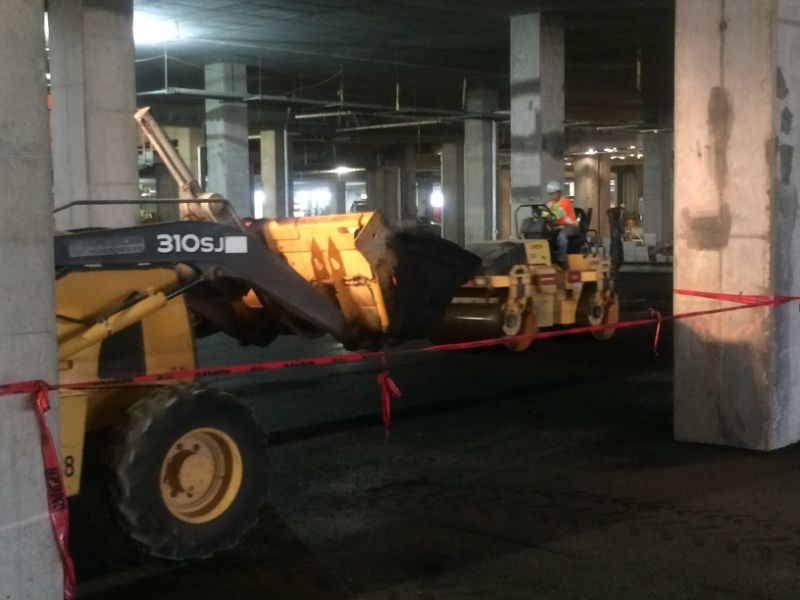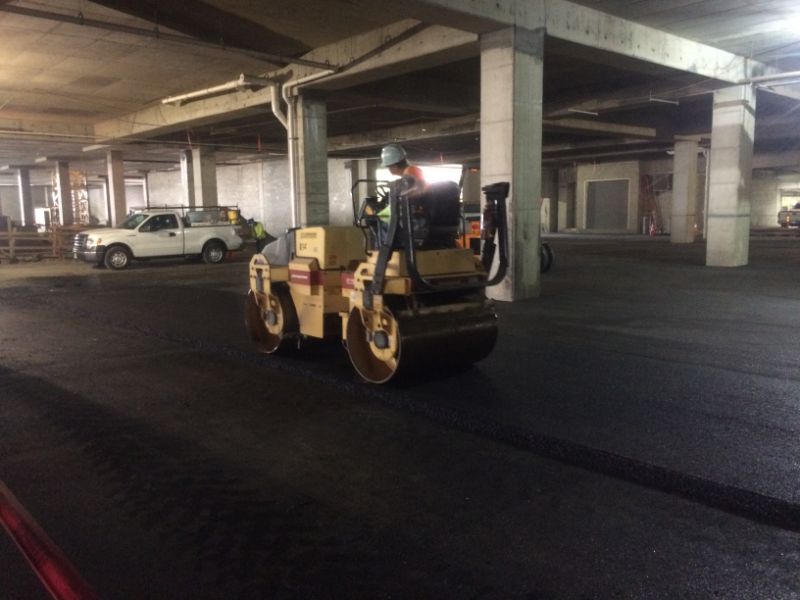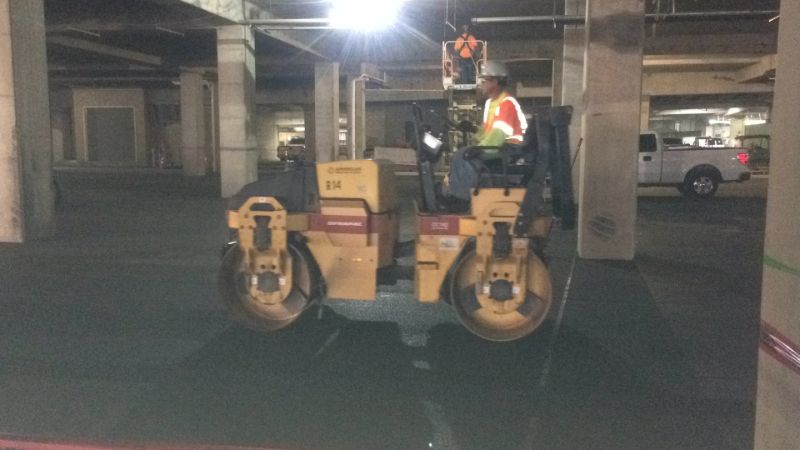How to Pave Under a Parking Deck
BY Jon Young

Rons Construction Corporation provided the opportunity for us to share some tips for paving in the dark, under a structure. Ala Moana Shopping Center management plans to open a 650,000-square-foot, multi-level expansion later this year. The Ewa Expansion will include an additional 1,000 parking spaces in the Mauka Ewa parking structure, and that’s where Rons Construction comes in.
How to Stage Paving Equipment for Multi-Day Commercial Projects
The additional parking for the expansion includes rehabilitated parking areas under an existing parking deck. Rons Construction Corporation started their asphalt paving in June 2014 and have been working on and off since then. They anticipate that their last call-out will be sometime in late November 2015.

Paving beneath a deck presents different challenges from paving an open-air parking lot. Some of those include limited work space and limited sight. Let’s look at how to deal with both.
Deal with Space Limitations
The overhead workspace is limited by the height of the deck above. In addition, there are many columns that need to be avoided during the placement of the asphalt pavement.

Height restrictions mean mix can’t be delivered directly from the dump truck to the hopper. Instead, a loader bucket must bring the mix to the paver. For the Rons Construction crew, they dropped the mix in a mini-stockpile in an open area, and then brought material to the paver by the bucketful. If your crew elects this method, here are some tips:
- Keep the loader bucket at least an inch off the ground when scooping to ensure no contamination of the HMA.
- Use adequate equipment for the rate at which you can feed the paver. Rons Construction crew was able to see production rates of 100 to 150 tons per day.
- Only smaller rollers can be used in the limited work space. Use plate compactors adjacent to columns and along raised concrete islands to obtain proper compaction.
Deal with Visibility Limitations
Lighting under a deck is obviously not as bright as the open-air, daytime parking lot conditions, and the many support columns for the deck limit line of sight for workers.
While it might not be feasible to place convex mirrors on support columns to provide additional visibility, creative lighting is always an option.

A haul truck won’t be able to raise its bed under the parking deck. Instead, you’ll need to deliver the material to a central location and take the mix to the paver with the loader.
Start with the toolbox talk at the beginning of the shift. Ensure each member of the crew knows how equipment and material will be staged, and the allowed movements within the work area. You might be in a closed work zone, but this dim area requires reflective clothing so co-workers can see you and you can see them. Additional lights on moving equipment can help bring attention to a machine when its backup alarm echoes off concrete walls.
This article originally appeared in the July 17 Hawaii Asphalt Paving Industry (HAPI) newsletter and is reprinted with permission. Additional information has been added by AsphaltPro staff.
